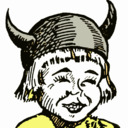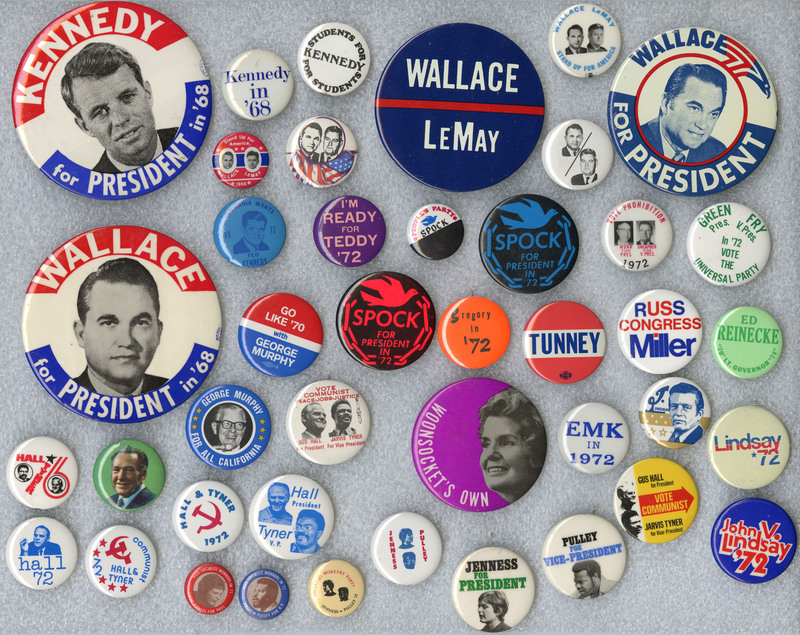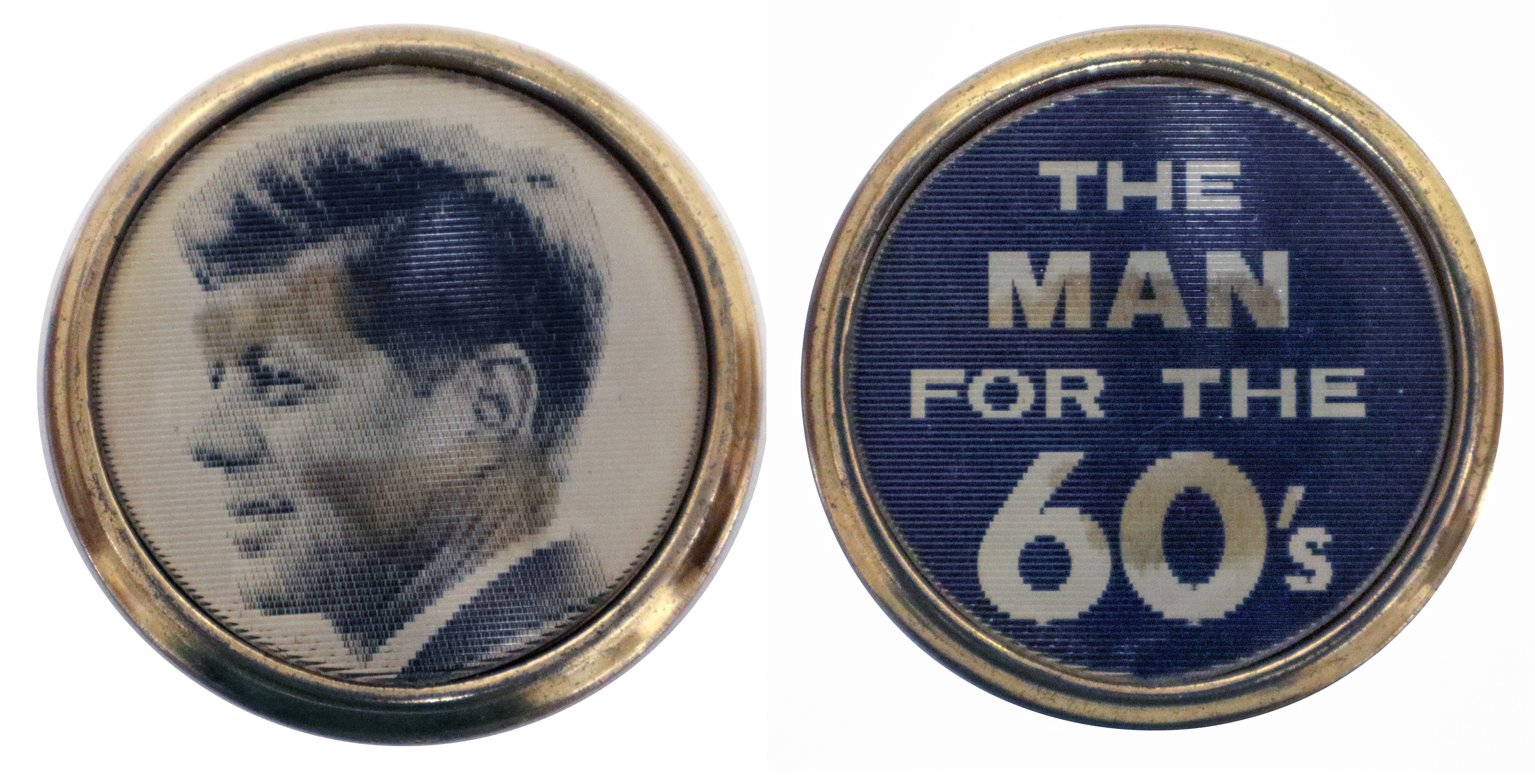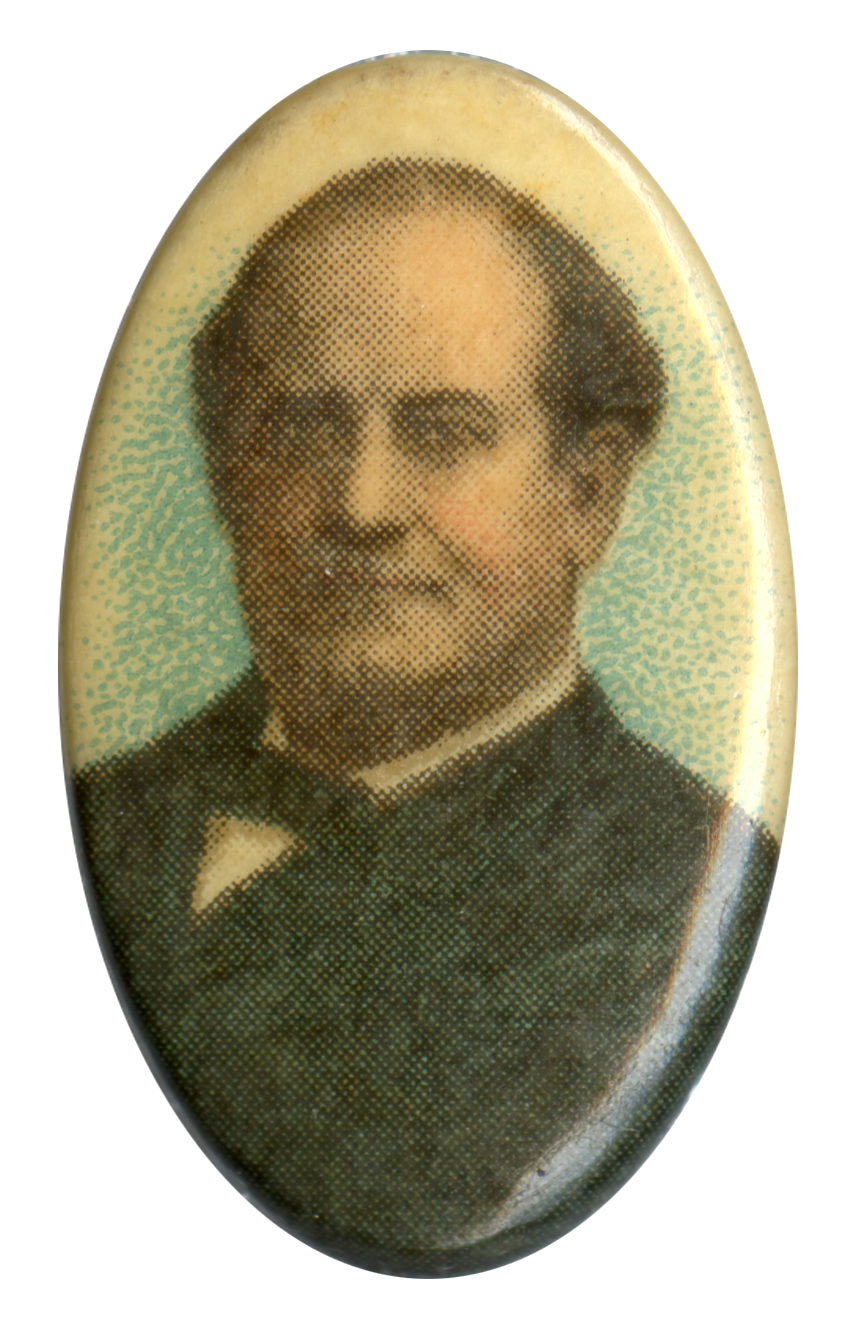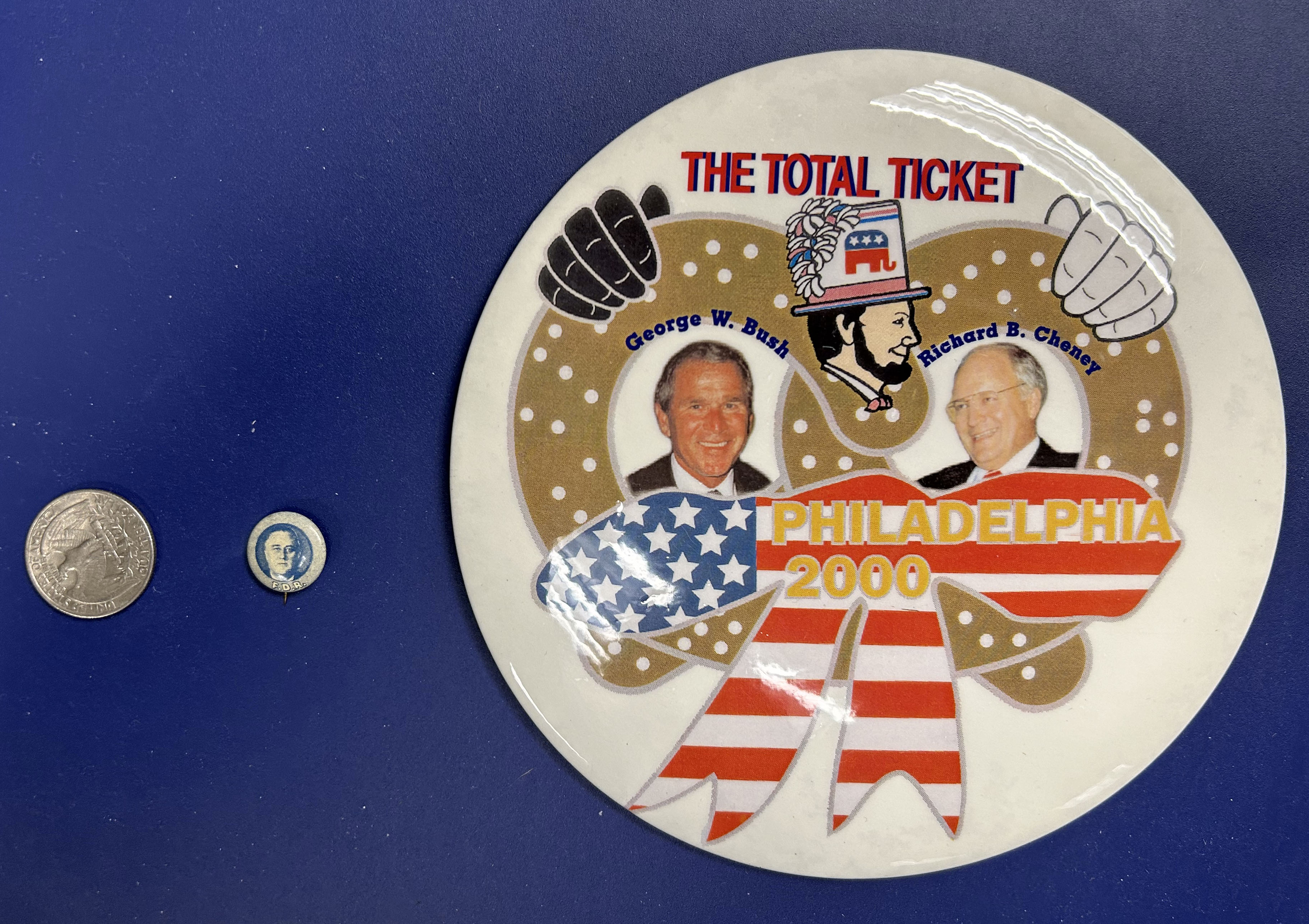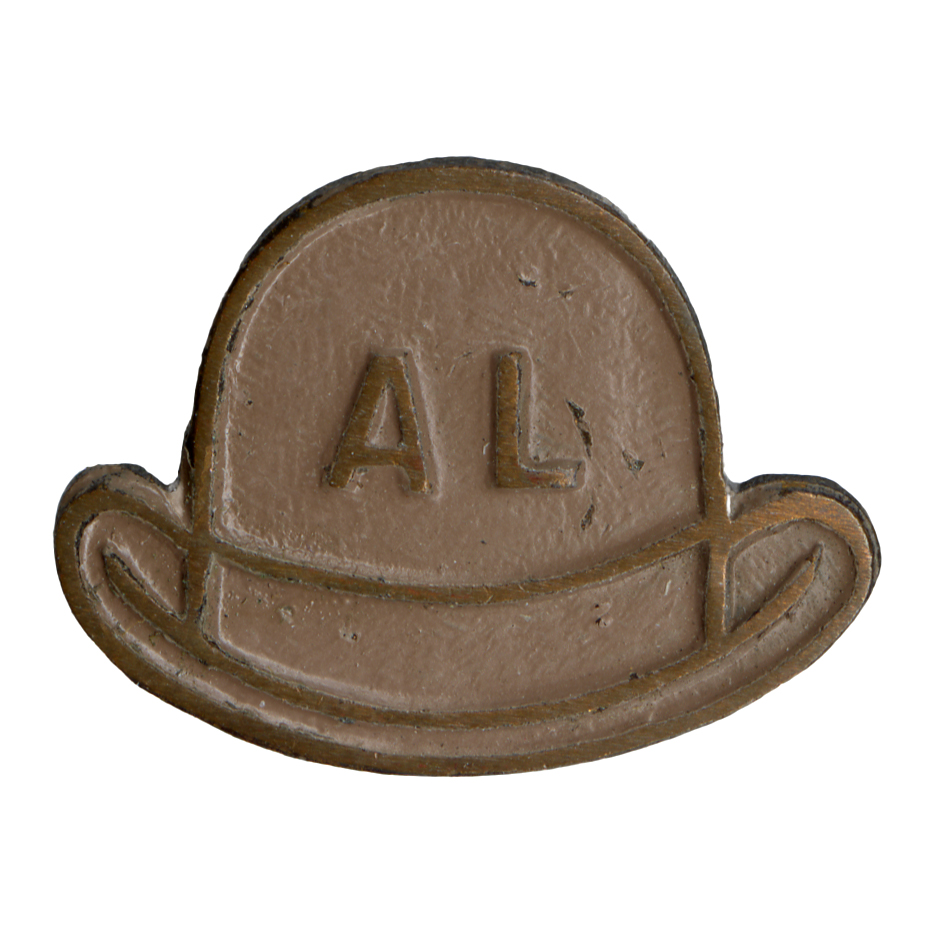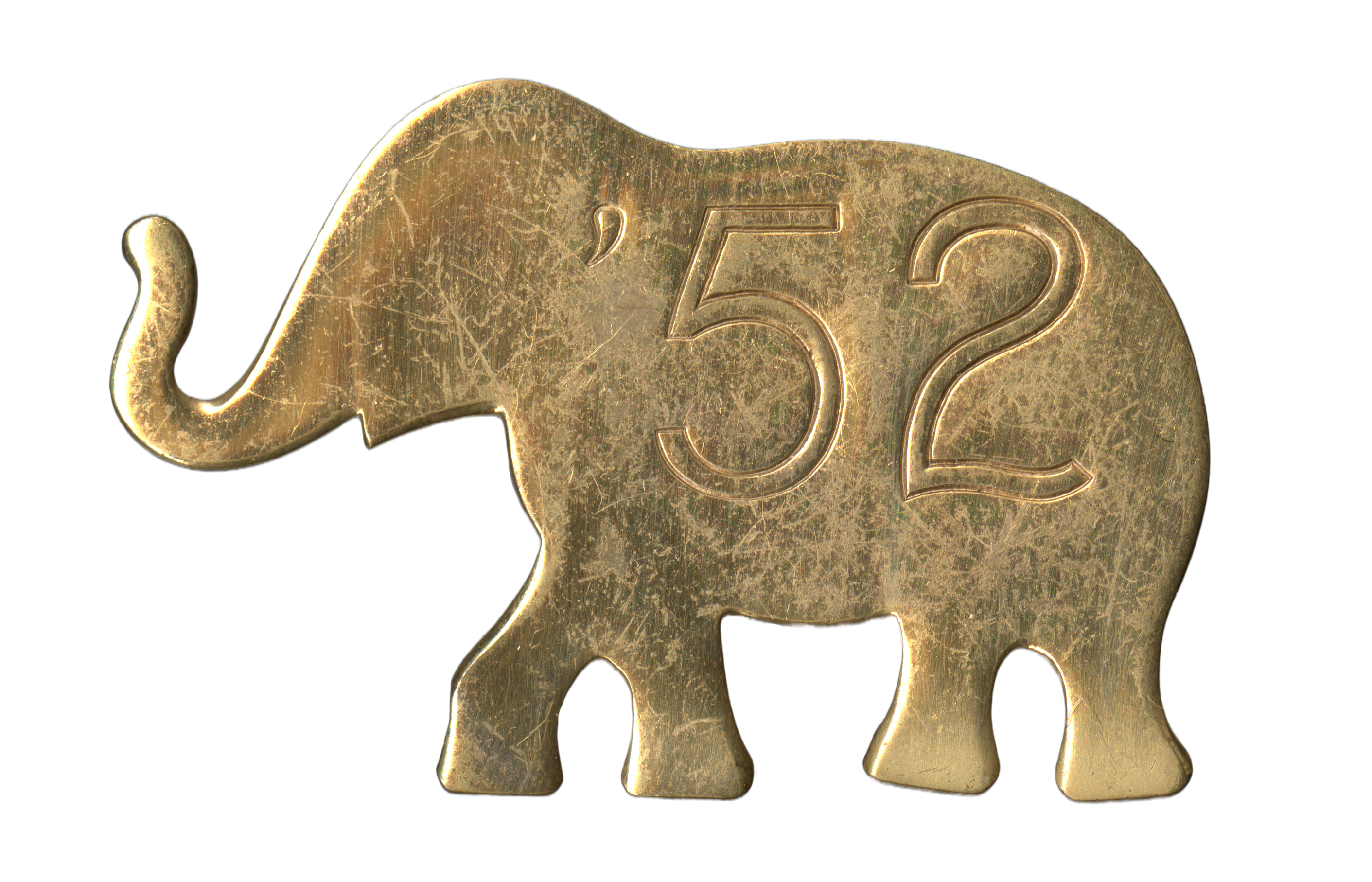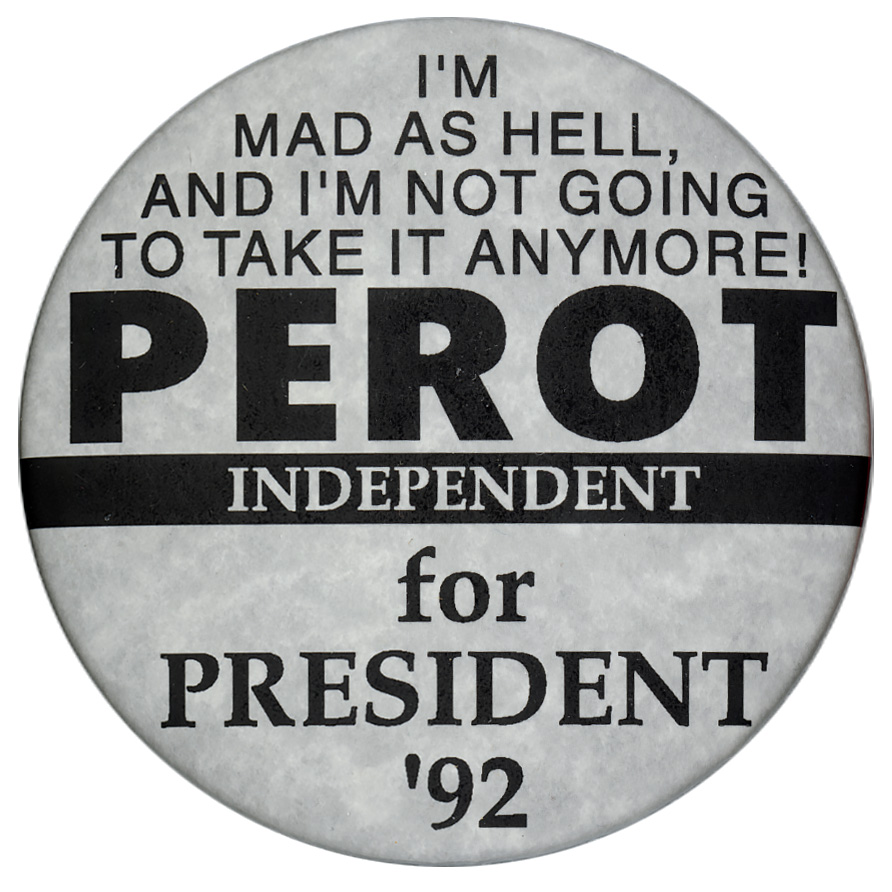The Collection
The Political Buttons and Stickers Digital Collection was created to increase access to a large assemblage of buttons and stickers, most of which relate to American political life. Researchers can find photos of the button fronts and may notice that the print quality and clarity can vary dramatically.
The Political Buttons and Stickers archival collection preserved by the University of Idaho Special Collections and Archives contains 1,911 buttons and 19 stickers, dating between 1890 and 2001. Many of the buttons convey information about various federal and state political campaigns, while others are more humorous or used for advertisement purposes. They feature a variety of events beyond the election campaigns themselves, including inauguration ceremonies, conventions, advertisements, the Olympic Games, the University of Idaho, and more. The stickers in the collection address political campaigns as well as topics like overpopulation and professional football.
Faculty in the University of Idaho Politics and Philosophy Department transferred these buttons to the University Library in 2025. Archivist and Special Collections Librarian Kelley Moulton began working with the collection in January of 2025. Each button was removed from existing plastic packaging and pinned to archival foam for better organization. Button identification relied on some minimal documentation that accompanied each item at the time of donation, augmented by additional research where possible. See a previous Harvester post, Political Button Overload, for more information on the processing of this archival collection.
After the collection of buttons was catalogued, Archives Coordinator Zoe Stave took photographs of the items, experimenting with effective lighting and photo editing. Digital Archivist Rebecca Hastings prepared the photos and metadata for inclusion in this digital collection. This was truly a team effort, from start to finish.
Campaign Buttons in the University of Idaho Collection
The presidential election of 1896, in which Republican William McKinley and Democrat William Jennings Bryan ran against one another, was the first contest to incorporate celluloid, mass-produced political buttons into campaigning. These buttons featured a printed image or words on the front of the button which was then covered with a thin sheet of synthetic plastic-like material. Political ephemera of earlier eras, dating to the 1850s, were typically thin tintypes with small photographs. Even earlier, George Washington’s 1789 inauguration featured clothing buttons and fasteners with words and images that showed one’s support for a candidate.1
Today’s buttons are very similar to those from 1896. They still tend to have metal backs with an image covered with a thin sheet of plastic. But some advances in button technology can be found in this collection. A number of buttons feature holographic or lenticular images where the image changes as the angle at which it is viewed changes; these were popular between 1950 and 1980.
The colors used in the buttons changed dramatically as time progressed. The older buttons generally included a white background with only a few additional colors and very simplistic designs.
Newer buttons contain a broader range of colors, such as buttons from 1997 with bright purples and yellows, as well as more artistic elements in general.
The size of the buttons has also increased! The buttons in this collection range from being smaller than a quarter to almost as large as a dinner plate.
Most of the buttons are round, but hidden within the collection are rectangular buttons, buttons shaped like hats, buttons that look like sunflowers, numerous elephants, buttons with ribbons, heavily beaded and decorated buttons, and more.
Word play is another common theme among this collection of buttons. Candidates often made plays on their names and used symbols to represent part of their name. One of Barry Goldwater’s 1964 buttons, for example, features the chemical symbol for gold (Au) along with the chemical formula for water (H2O).
These campaign buttons also feature more than just the two dominant American political parties of the twentieth century, as numerous third-party candidates make appearances throughout. Ross Perot (Reform Party/Independent), Ralph Nader (Green Party), Joseph Lightburn (Constitution), and many others are represented.
These are just a few of the elements and themes represented in this collection. Consider what other connections exist as you explore this digital collection of over 100 years of American history.
Sources:
-
Trail to the Voting Booth: An Exploration of Political Ephemera. University of Delaware. https://exhibitions.lib.udel.edu/trail-to-the-voting-booth/on-the-trail/campaign-buttons/. Archived: https://perma.cc/5CP2-GYTG ↩
